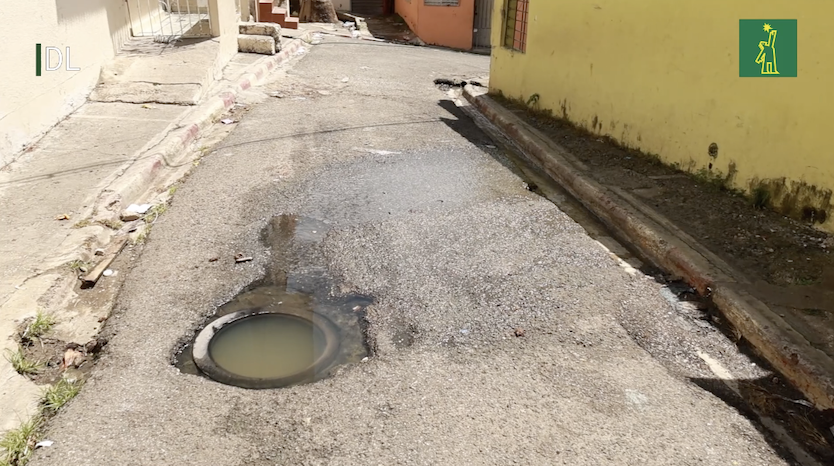
The boom in construction of a high rise where there was but a single-family home, authorized by the Carolina Mejia city government without taking into consideration the deficient sewage capacities in the city, is worsening a decades-old problem that needs to be tackled now.
The aging sewage infrastructure cripples Greater Santo Domingo’s precarious sewage system, Diario Libre reports. Greater Santo Domingo’s sanitary drainage system is facing a crisis, with frequent collapses largely attributed to aging, obsolete pipes, an unplanned population boom, and a lack of public awareness. Only 18% of the streets and avenues in the area have sanitary sewage, and even that is severely overloaded, according to Luis Salcedo, deputy director of operations for the Santo Domingo Aqueduct and Sewer Corporation (CAASD).
In its report, Diario Libre highlights that the root of the problem is that many of the existing systems date back to the Rafael Leónidas Trujillo era, constructed with materials like clay and metal that are now succumbing to the weight of the earth, water, and tree roots. While PVC pipes were later introduced, the fundamental issue persists.
“With population growth and the same pipes, they are now carrying more water than the system was designed for,” Salcedo explained. He also pointed to poor waste management by citizens as a critical factor. Residents often flush solid waste, such as “wipers” (sanitary wipes), which create concrete-like blockages that even powerful suction trucks can’t break down, leading to burst pipes.
Diario Libre explains that areas like Ciudad Nueva, Zona Colonial, San Carlos, and Villa Francisca have sanitary sewage systems, but the newer upscale neighborhoods such as Piantini and Naco surprisingly lack this infrastructure. In these areas, wastewater is discharged underground and collected through septic systems. This is the area where in recent years the construction of high rises has intensified, following clearance by the Mejia city government, despite protests of neighborhood groups.
The issue would have been tackled by past governments, but the costly plans were discarded, many say because people don’t notice what gets done underground. The sewage actions are said to not win votes because the efforts are hidden underground. Diario Libre tells of how a comprehensive plan to resolve the situation in 2010 was derailed.
Turns out, in 2010, the CAASD developed a master plan to address Greater Santo Domingo’s long-term sanitary drainage issues. The ambitious project, estimated at US$700-US$800 million and designed by the globally renowned firm Hans and Sawyer, aimed to provide sanitary sewage to the entire region over 40 years. This included plans for seven wastewater treatment plants and four submarine outfalls, one each at the 6 de Noviembre highway toll, José Núñez de Cáceres Avenue, Alma Máter Avenue, and Los Frailes. Another proposed solution was to connect some northern Santo Domingo neighborhoods to the La Zurza treatment plant. However, this comprehensive plan never materialized.
Meanwhile, to combat the frequent outbreaks of sewage water, the CAASD has implemented a program called the “Zone Plan.” This initiative divides Greater Santo Domingo into four operational areas, with six to eight brigades assigned to each.
“One in Santo Domingo North, another in Santo Domingo West, and the National District and Santo Domingo East are divided into two areas,” Salcedo detailed. “This territory has been divided into 26 operational zones, each led by an engineer and equipped with more brigades.”
The CAASD is also acquiring four new hydro-cleaning machines to bolster these efforts.
Luis Salcedo of the city water corporation, acknowledged in the interview with Diario Libre that sanitary drainage is a fundamental issue for citizens, directly impacting public health. He affirmed the CAASD’s commitment to resolving the problem, emphasizing the need for an integral project to be executed in stages to minimize disruption to urban life.
Read more in Spanish:
Diario Libre
23 May 2025

